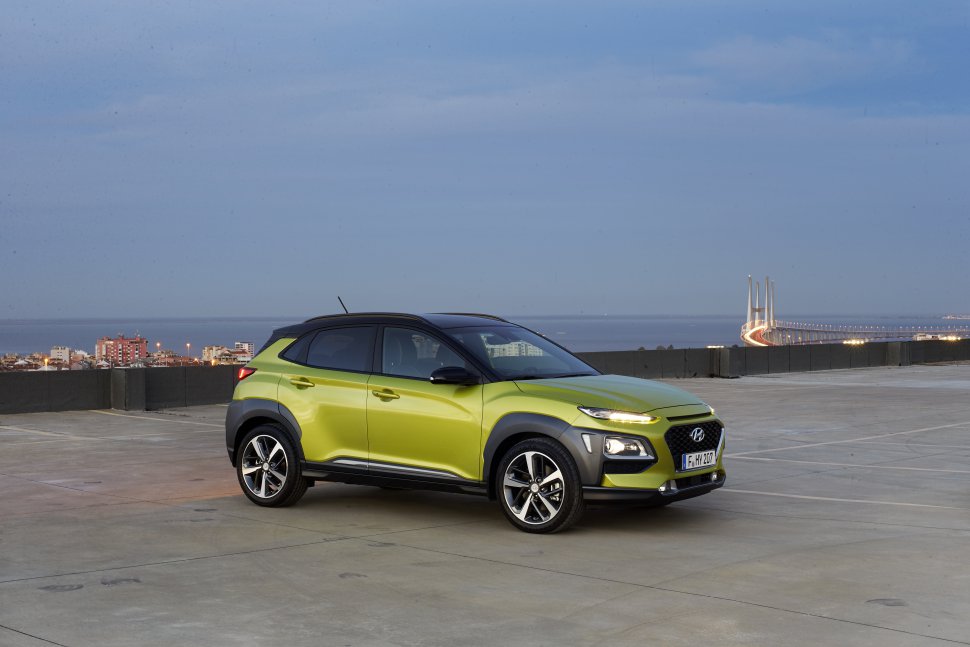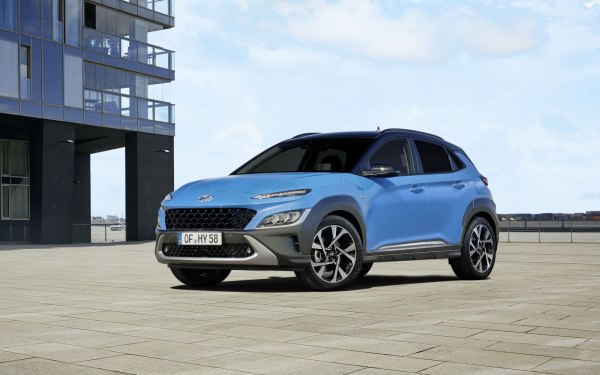| General information |
|---|
| Brand | Hyundai |
|---|
| Model | Kona |
|---|
| Generation | Kona |
|---|
| Modification (Engine) | 1.0 T-GDI (120 Hp) |
|---|
| Start of production | 2017 year |
|---|
| End of production | September, 2020 year |
|---|
| Powertrain Architecture | Internal Combustion engine |
|---|
| Body type | SUV |
|---|
| Seats | 5 |
|---|
| Doors | 5 |
|---|
| Performance specs |
|---|
| Fuel consumption (economy) - combined |
5.3 l/100 km
44.38 US mpg53.3 UK mpg18.87 km/l |
| CO2 emissions | 119 g/km |
|---|
| Fuel Type | Petrol (Gasoline) |
|---|
| Acceleration 0 - 100 km/h | 12 sec |
|---|
| Acceleration 0 - 62 mph | 12 sec |
|---|
| Acceleration 0 - 60 mph | 11.4 sec |
|---|
| Maximum speed |
181 km/h
112.47 mph |
| Emission standard | Euro 6 |
|---|
| Weight-to-power ratio | 10.3 kg/Hp, 97.3 Hp/tonne |
|---|
| Weight-to-torque ratio | 7.2 kg/Nm, 139.5 Nm/tonne |
|---|
| Engine specs |
|---|
| Power | 120 Hp @ 6000 rpm. |
|---|
| Power per litre | 120.2 Hp/l |
|---|
| Torque |
172 Nm @ 1500-4000 rpm.
126.86 lb.-ft. @ 1500-4000 rpm. |
| Engine location | Front, Transverse |
|---|
| Engine displacement |
998 cm3
60.9 cu. in. |
| Number of cylinders | 3 |
|---|
| Position of cylinders | Inline |
|---|
| Cylinder Bore |
71 mm
2.8 in. |
| Piston Stroke |
84 mm
3.31 in. |
| Compression ratio | 10 |
|---|
| Number of valves per cylinder | 4 |
|---|
| Fuel System | Direct injection |
|---|
| Engine aspiration | Turbocharger |
|---|
| Valvetrain | DOHC |
|---|
|
|---|
| Space, Volume and weights |
|---|
| Kerb Weight |
1233 kg
2718.3 lbs. |
| Trunk (boot) space - minimum |
361 l
12.75 cu. ft. |
| Trunk (boot) space - maximum |
1143 l
40.36 cu. ft. |
| Dimensions |
|---|
| Length |
4165 mm
163.98 in. |
| Width |
1800 mm
70.87 in. |
| Height |
1565 mm
61.61 in. |
| Wheelbase |
2600 mm
102.36 in. |
| Front overhang |
845 mm
33.27 in. |
| Rear overhang |
720 mm
28.35 in. |
| Ride height (ground clearance) |
170 mm
6.69 in. |
| Drivetrain, brakes and suspension specs |
|---|
| Drivetrain Architecture | The Internal combustion engine (ICE) drives the front wheels of the vehicle. |
|---|
| Drive wheel | Front wheel drive |
|---|
| Number of Gears (manual transmission) | 6 |
|---|
| Front brakes | Ventilated discs |
|---|
| Rear brakes | Disc |
|---|
| Assisting systems | ABS (Anti-lock braking system) |
|---|
| Steering type | Steering rack and pinion |
|---|
| Power steering | Electric Steering |
|---|
| Tires size | 205/60 R16; 215/55 R17; 235/45 R18 |
| Wheel rims size | 16; 17; 18 |
|---|
|
|---|

